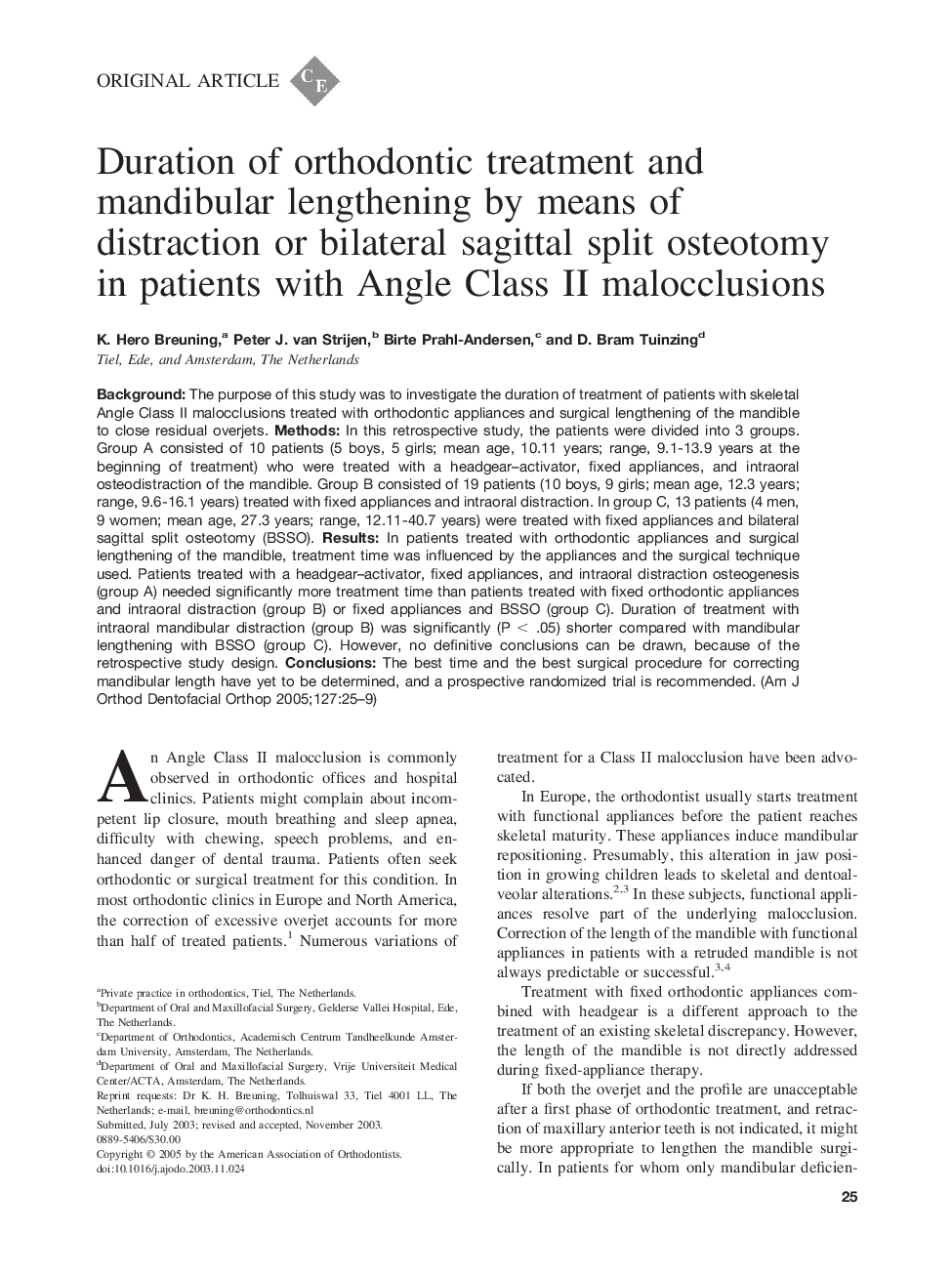| Article ID | Journal | Published Year | Pages | File Type |
|---|---|---|---|---|
| 9993141 | American Journal of Orthodontics and Dentofacial Orthopedics | 2005 | 5 Pages |
Abstract
The purpose of this study was to investigate the duration of treatment of patients with skeletal Angle Class II malocclusions treated with orthodontic appliances and surgical lengthening of the mandible to close residual overjets. Methods: In this retrospective study, the patients were divided into 3 groups. Group A consisted of 10 patients (5 boys, 5 girls; mean age, 10.11 years; range, 9.1-13.9 years at the beginning of treatment) who were treated with a headgear-activator, fixed appliances, and intraoral osteodistraction of the mandible. Group B consisted of 19 patients (10 boys, 9 girls; mean age, 12.3 years; range, 9.6-16.1 years) treated with fixed appliances and intraoral distraction. In group C, 13 patients (4 men, 9 women; mean age, 27.3 years; range, 12.11-40.7 years) were treated with fixed appliances and bilateral sagittal split osteotomy (BSSO). Results: In patients treated with orthodontic appliances and surgical lengthening of the mandible, treatment time was influenced by the appliances and the surgical technique used. Patients treated with a headgear-activator, fixed appliances, and intraoral distraction osteogenesis (group A) needed significantly more treatment time than patients treated with fixed orthodontic appliances and intraoral distraction (group B) or fixed appliances and BSSO (group C). Duration of treatment with intraoral mandibular distraction (group B) was significantly (P < .05) shorter compared with mandibular lengthening with BSSO (group C). However, no definitive conclusions can be drawn, because of the retrospective study design. Conclusions: The best time and the best surgical procedure for correcting mandibular length have yet to be determined, and a prospective randomized trial is recommended.
Related Topics
Health Sciences
Medicine and Dentistry
Dentistry, Oral Surgery and Medicine
Authors
K. Hero Breuning, Peter J. van Strijen, Birte Prahl-Andersen, D. Bram Tuinzing,
